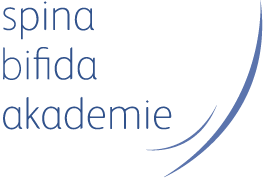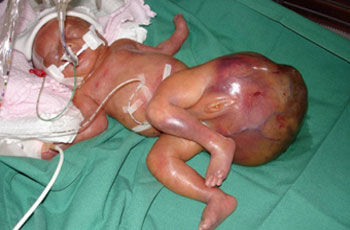Sacrococcygeal teratoma
Problem
Fetal tumors are very rare. Sacrococcygeal tumors, the most common type of fetal tumor, are generally not malignant in neonates and have a good prognosis provided they can be successfully removed.
Sacrococcygeal teratoma (SCT) is a benign tumor that arises from the tip of the coccyx (tail bone). It can become so enormous during pregnancy that the fetus can die from intrauterine cardiovascular failure. In such cases the only possible treatment is prenatal removal of the tumor.
Diagnosis
This malformation can be diagnosed by ultrasound. The adjacent illustration shows the vertebral column (VC) and alongside it in the buttock region a large sacrococcygeal tumor (S). Tumors of this kind can become very large, imposing a major cardiovascular load on the fetus. As a result, the prognosis also depends on whether the heart is able to continue pumping.
Therapy
Children with a sacrococcygeal teratoma are delivered by cesarean section to avoid damaging the tumor, since any such injury generally results in severe bleeding. After delivery the tumor is removed surgically (1). In rare cases the tumor grows so large during pregnancy that the fetal heart can no longer maintain the blood circulation. In such cases a fetal operation to remove the tumor can be attempted. This improves the child’s chances of survival (2).
Outcome
The outcome varies greatly and depends on the size of the tumor and on what structures it damages.







